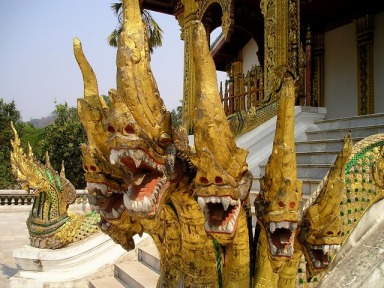Rare Dragons
Dragons have always left us fascinated. Subjected to rigorous debates and even more rigorous beliefs of dragons being gods, they have survived years of studies and scrutiny through innumerable tales and stories in our hearts. Read on to know more about the most obscure dragons known to mankind.
Rare Dragon – The Indian Naga
Indian myths and folklore have introduced us to the polysepalous reptile that drinks only milk and feasts on frogs, known as the Naga. They are the king of the serpentine fraternity though they can morph themselves into humans if need be. Unlike the other fictitious dragons, the rare Naga dragon doesn’t have wings and is depicted similar to Chinese dragons, as guardians of enormous wealth and transforming into water-spirits. Because the word ‘Naga’ in Sanskrit denotes slithery reptiles, the real incarnation of the dragon ‘Nagas’ is not known to many.
Rare Dragon – The Philippine Bakunawa
This rare breed of dragon is gigantic and known to be the cause of eclipses in Philippine mythology and folk tales. With a mouth as big as a lake, Bakunawas have two sets of wings, much like the fins of fishes. Filipinos have always associated the moon and its eclipses with the rare species of dragon. Bakunawa had a sister in the form of a turtle who was killed by villagers of the island where it laid its eggs. An enraged Bakunawa woke up from its slumber to swallow the moon, resulting in the first ever lunar eclipse. After repeated prayers and rituals to appease the native god Bathala, he advised the villagers to beat drums and vessels to ward off the serpentine beast. It regurgitated the moon only not to return again.
Rare Dragon – The Siberian Yilbegan
Yilbegan, the dragon known for riding an ox with 99 horns, possesses more European than Eastern traits and is portrayed like an ogre-looking man-eating behemoth rather than a friend to humanity. We find references to the Yilbegan in Siberian and Turkish mythology as a multi-headed reptile. Popular Turkish and Siberian folklores consider the rare dragon to be the offspring of Altan Sibaldai, “the golden witch”, an accomplice of the underworld lord.
Rare Dragon – The Norse or Scandinavian Nidhogg
According to Norse mythology, the Nidhogg is that mammoth serpentine who gnaws at one of the roots of the Yggdrasill – the giant central tree of Norse cosmology or the World Tree which strings the nine worlds of Norse mythology together. The poem Völuspá describes the Nidhogg as one who ‘sucks on the corpses of the dead’. Ursula Dronke, the Scandinavian medievalist and a former reader, translated a part of the “Poetic Edda” as,
“There comes the shadowy
Dragon flying,
Glittering serpent, up
From Dark of the Moon Hills.
He carries in his pinions
—he flies over the field—
Malice Striker, corpses.
Now will she sink…”
Rare Dragon – The Chuvash Dragon
Said to have lived in a pagan tower, the rare Chuvash dragon had three heads and exhaled fire in the wake of the night. Much like the Nagas, they too can easily transform themselves into humans and vice versa and more popularly called the Veri Celen. Russian myths that date back thousands of years tell us how the natives of Chuvash had found a massive reptile and wanted to kill it. When the reptile pleaded with gods, they blessed him with a pair of wings which is how the dragon started to fly.
Rare Dragon – The Cantabrian Cuélebre
Austrian and Cantabrian mythology refer to a winged dragon that lived in caves and guarded massive wealth. This was a rare breed of immortal dragons that could only be killed with a meal of red-hot stones or bread infested with pins. Contradictorily, their spirits were said to have turned into magical stones that healed many unsaid diseases.
